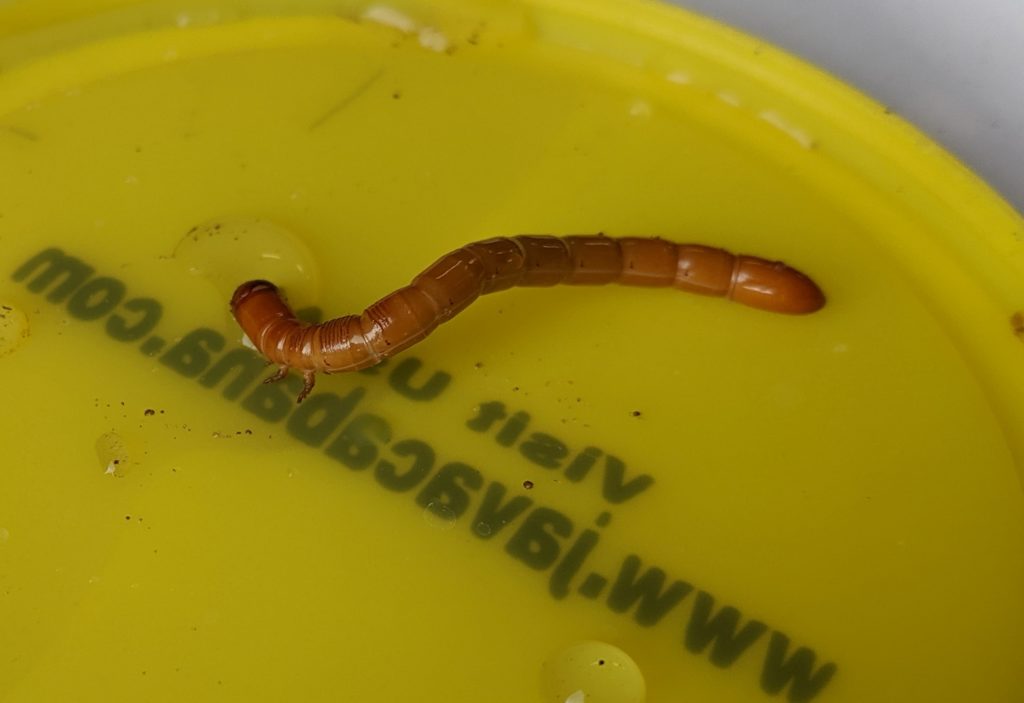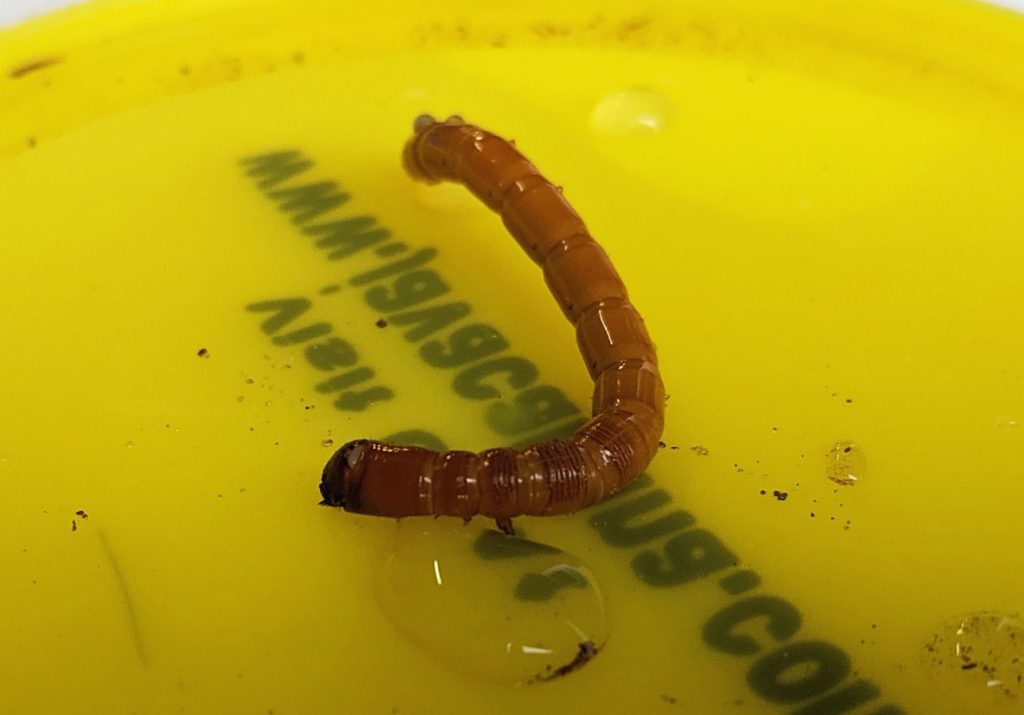Because I play in the dirt and I dig holes for the purpose of moving plants around, and because the digging I do is frequently on a fairly high quality site at our wildlife refuge, I often find weird stuff!
Sometimes my first reaction is to instinctively wrinkle my nose and make an “Ewwww!!!” face. My second reaction is “Cool!” My third reaction is, “I wonder what that is and what it’s doing there?”
Saturday, I was transplanting precious new plants out on the refuge, trying to beat the developing drizzle–perfect transplanting weather!–when I came across this weird critter several inches under the soil surface. It was about two inches long, so quite easy to spot. It reminded me a little of a Centipede, but had far too few legs, and was too cylindrical.

The soil fell right off the creature, revealing a shiny surface that almost seemed to be soil repellent. What lives in the dirt and never looks dirty!? Is there something we could learn from this guy?
In contrast to its cleanliness, I had mud caked all over my hands, so I didn’t have a camera with me. I popped the little guy into the empty water jug I had with me, and dumped him back out when I got back to the barn. Richard snapped a couple photos on his cellphone before we tossed the critter back into the soil to resume its life.

So, when you have a strange living thing and don’t know what it is, what do you do? I look for clues and try to develop a string of words that accurately describes the thing. Then I search the amazing internet. In this case I used “segmented orange insect larva” as a search string. I was pretty sure it was some stage of an insect because it looked like there were six true legs at the head end. The head end had obvious jaws, so no trouble picking out which end was which this time.
The first few hits returned in the search engine were matches. Bugguide.net is always a great resource for accurate identification help, so when it shows up in the returns, I usually choose that hit to pursue and learn more.
This thing appears to be a “Wire Worm”, an insect larval stage that eventually turns into a Click Beetle. The adult phase looks nothing at all like the larval phase! As larvae, they live underground dining on the insides of seeds and on plant roots. A heavy infestation in a cornfield can cause stunted plants and production losses. I have no idea what it was dining on in my meadow, but I’m glad we moved it away from the new transplants so the stressed new plants can have a better chance at survival.
Until next time, stay curious.